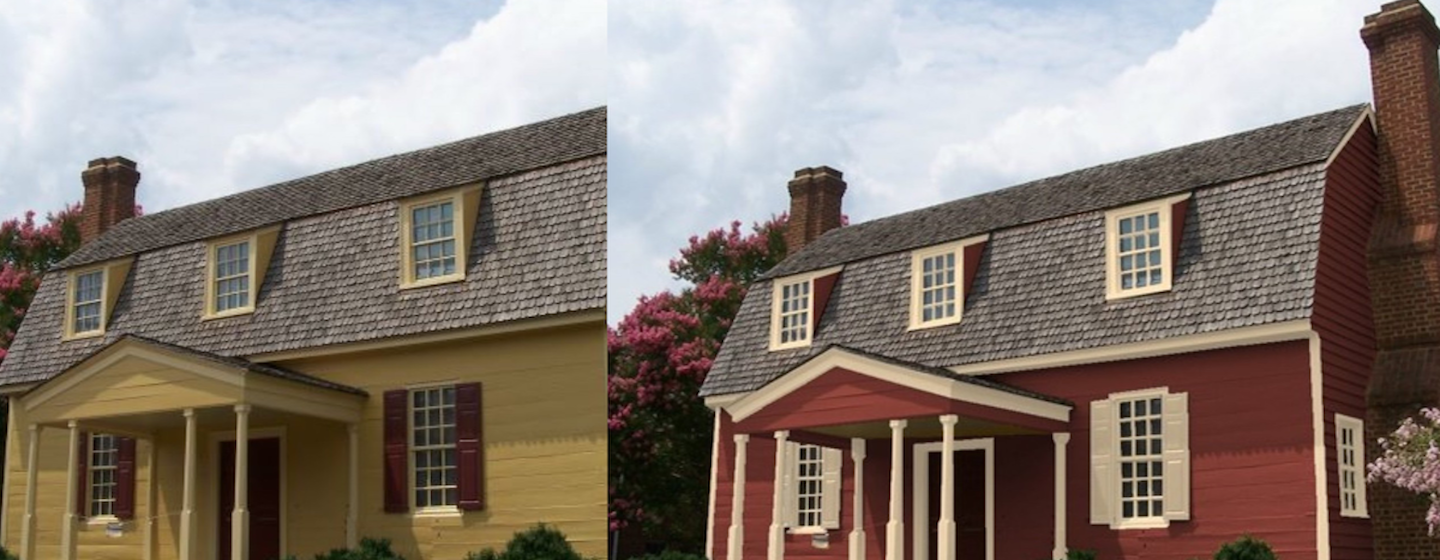What 26 Layers of Paint Revealed about the Joel Lane House


One of North Carolina’s oldest houses is sporting a new look and sending historians scrambling. The restoration project at the Joel Lane House is also giving historians and educators a new opportunity to shed light on the role of slavery in early Raleigh.
The Joel Lane House was built around 1769 in what was, back then, a very rural part of North Carolina. Lane was a planter and a colonel in the militia. He also served as a justice of the peace and a senator in the General Assembly. He’s known as the “Father of Wake County” because he facilitated the location of North Carolina’s capital city on his land in 1792.
The house is a museum now, owned by the National Society of the Colonial Dames of America. To celebrate its 250th anniversary, the curators launched an important preservation project to repaint the house to better preserve it as well as repair some of the siding. Normally, preservationists avoid removing old paint at all costs, because that’s essential evidence of the history of a structure. It’s also the first layer of protection against the elements, especially moisture.
However, some of the paint was failing and actually trapping moisture behind the wood. The wood was rotting. So, to save the wood, the paint had to go, even if it meant losing all of the evidence captured in those layers of color.
The museum asked Dr. Susan Ruck, a preservationist from Colonial Williamsburg to analyze paint samples from the house to discover what the house was first painted 250 years ago. Dr. Ruck discovered 26 layers of paint. That’s the entire history of the house.
The research discovered that in 1769, Lane chose a distinctive garnet red, highlighted by tan-colored trim, for the siding of his new house. That’s a big change from the yellow building Raleigh has known since the 1970s. It was actually a pretty unique choice in the 18th century.
“The original palette of dark red siding and tan-colored trim is somewhat unusual for a pre-Revolutionary house,” Dr. Buck wrote in the conclusion of her report.
The siding also revealed the marks from a hand-pulled pit saw that slaves would have used to cut the boards.
“A lot of that wood is original,” said Lanie Hubbard, museum director. “It hasn’t seen the sun since enslaved workers first sawed it into boards, nailed it in place, and painted it, which is why we’re preserving a section of the bare wood to demonstrate what was discovered.”
And that discovery will be part of an enhanced and expanded program dealing with slavery.
“My goal is to incorporate the people who were enslaved here into every aspect of our interpretation,” explains Hubbard. “There are many things about the occupations, living arrangements, and treatment of slaves we don’t know because the documentation doesn’t exist. But we will speak from the facts we have, admit what we don’t know, and make reasonable suppositions based on evidence from other plantations that were similarly situated.”
One historical figure who will be featured in Lunsford Lane, whose father Ned, aunt and uncle were enslaved by Joel Lane. Lunsford’s narrative offers an unparalleled portrait of enslaved life in early Raleigh.
To date, museum researchers have found the names of 43 enslaved people who worked at the house. Their names are featured on a new memorial at the house.
While the restoration uncovered more history of the house, one tale likely lost to time is the origin of two bullets (or pieces of buckshot) restoration experts found embedded in the wood. Nobody knows who shot at the house or why.
The building is now protected by a dark red paint, a vivid color that was buried for more than two centuries.